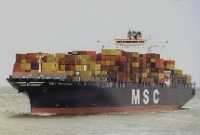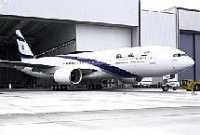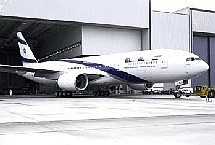El Al posted a net profit of USD$14.8 million, compared with a net loss of USD$19.7 million a year ago. Cargo revenue also grew 56% to USD$ 48.4 million
El Al Israel Airlines said last week it swung to a second-quarter net profit, as passenger and cargo revenue jumped. El Al posted a net profit of USD$14.8 million, compared with a net loss of USD$19.7 million a year ago.
Revenue rose by 25% to USD$498.5 million on higher passenger traffic and an increased yield per passenger per kilometer, El Al said. Cargo revenue also grew 56% to USD$ 48.4 million, compared to USD$31.0 million in the corresponding period last year.
El Al's market share from Tel Aviv's Ben Gurion international airport remained at 38%, while its load factor rose to 80.1% from 77.6% in the second quarter of 2009.
El Al said on Wednesday it overcame higher fuel expenses from a nearly USD$20 jump in oil prices and the volcanic ash crisis in Europe. The airline's cash balance was USD$180 million.
El Al's CEO, Elyezer Shkedy, credits this financial improvement to greater passenger traffic, a significant increase of revenue by 25%, a reduction of expenses, wise strategic commercial planning, aggressively facing the competition, and maintaining a high market share.
Shkedy stated, “We boosted its activities and seat availability, leading to an increased number of passengers. We also signed for and received a dedicated 747-400 cargo freighter which began operating during this quarter and helped significantly improve and expand worldwide cargo activities, resulting in a 56% increase”.
Shkedy added that "The significant cash balance... provides a good foundation, which will assist us in taking advantage of opportunities and to develop growth engines and additional revenue sources, all in accordance with the company's commercial strategies”.
El Al: Q2 profit up as traffic and cargo jumps
El Al posted a net profit of USD$14.8 million, compared with a net loss of USD$19.7 million a year ago. Cargo revenue also grew 56% to USD$ 48.4 million
23.08.10 / 00:00
•
More articles that may interest you

El Al signs interline agreement with JetBlue

MSC: new "Israel express" service between Israel and north European ports

State Georgia opened new rep office in Israel

El Al weighs closure of Cairo flights

CBS: China jumps to 2nd place in import by country of origin

Tax Authority: 'Green tax reform having positive effect'
More news from Air Transport Section
>Elbit Systems partners with German co Grob in Training aircraft development/25.07.10
>New airport to be constructed near Eilat/12.07.10
>LOT Polish Airlines to double flights to Israel/12.07.10
>TNT Express to move cargo operations to Swissport Israel/12.07.10
>"Rose Al-Youssef": Egypt bans Israeli planes from Taba/05.07.10
>Delta Airlines VP: Delta to add seats on TLV - NY route/14.06.10
>Investors buy CAL Cargo Air Lines/14.06.10
>Israel and Romania signed renewed aviation agreement/14.06.10
>El Al & Atlasjet decided to suspend flights to Istanbul/07.06.10
>Night flight at Ben Gurion airport approved/07.06.10
